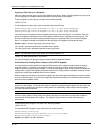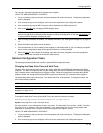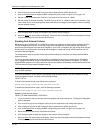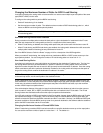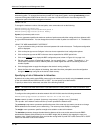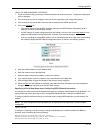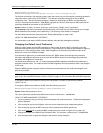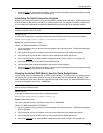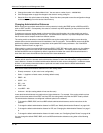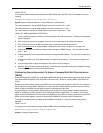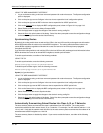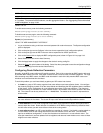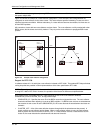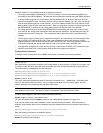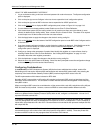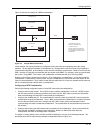
Advanced Configuration and Management Guide
5. Change the number in the Default Metric field. You can enter a number from 0 – 4294967295.
6. Click the Apply button to apply the changes to the device’s running-config file.
7. Select the Save
link at the bottom of the dialog. Select Yes when prompted to save the configuration change
to the startup-config file on the device’s flash memory.
Changing Administrative Distances
BGP4 routers can learn about networks from various protocols, including the EBGP portion of BGP4 and IGPs
such as OSPF and RIP. Consequently, the routes to a network may differ depending on the protocol from which
the routes were learned.
To select one route over another based on the source of the route information, the routing switch can use the
administrative distances assigned to the sources. The administrative distance is a protocol-independent metric
that IP routers use to compare routes from different sources.
The routing switch re-advertises a learned best BGP4 route to the routing switch’s neighbors even when the
software does not also select that route for installation in the IP route table. The best BGP4 routes is the BGP4
path that the software selects based on comparison of the paths’ BGP4 route parameters. See “How BGP4
Selects a Path for a Route” on page 10-3.
When selecting a route from among different sources (BGP4, OSPF, RIP, static routes, and so on), the software
compares the routes on the basis of each route’s administrative distance. The routing switch re-advertises a
learned best BGP4 route to neighbors by default, regardless of whether the route’s administrative distance is
lower than other routes from different route sources to the same destination.
NOTE: In software release 05.0.00 and later, the software will replace a statically configured default route with a
learned default route if the learned route’s administrative distance is lower than the statically configured default
route’s distance. However, the default administrative distance for static routes is changed to 1 in software release
05.2.00, so only directly-connected routes are preferred over static routes when the default administrative
distances for the routes are used.
Here are the default administrative distances on the HP routing switch:
• Directly connected – 0 (this value is not configurable)
• Static – 1 (applies to all static routes, including default routes)
• EBGP – 20
• OSPF – 110
• RIP – 120
• IBGP – 200
• Local BGP – 200
• Unknown – 255 (the routing switch will not use this route)
Lower administrative distances are preferred over higher distances. For example, if the routing switch receives
routes for the same network from OSPF and from RIP, the routing switch will prefer the OSPF route by default.
The administrative distances are configured in different places in the software.
• To change the EBGP, IBGP, and Local BGP default administrative distances, see the instructions in this
section.
• To change the default administrative distance for OSPF, see “Modify Administrative Distance” on page 8-34.
• To change the default administrative distance for RIP, see “Changing the Administrative Distance” on page 7-
6.
• To change the default administrative distance for static routes, see “Configuring Static Routes” on page 6-36.
You can change the default EBGP, IBGP, and Local BGP administrative distances using either of the following
methods.
10 - 30



